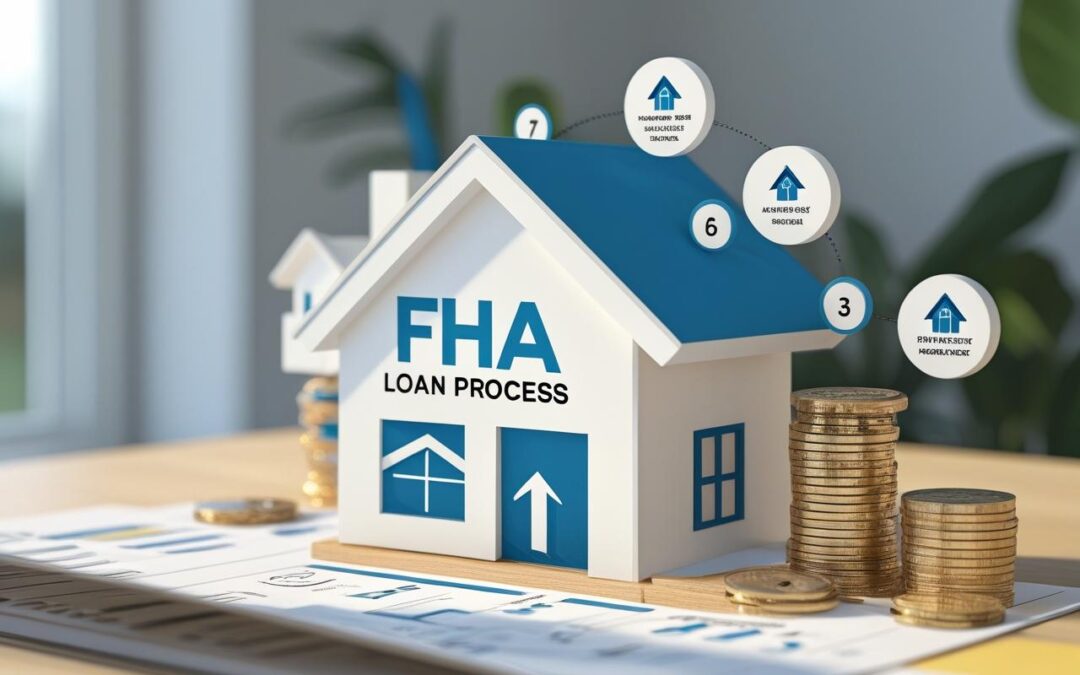
by support | Aug 2, 2025 | Blogs
When it comes to buying a property, one of the first questions is: Are you paying in cash, or taking out a mortgage? This decision can greatly impact your buying experience, negotiation power, and long-term finances. Let’s break down the pros and cons of cash buyers vs mortgage buyers so you can make an informed choice.
Who is a Cash Buyer?
A cash buyer is someone who can purchase a property outright without needing a loan. This means they have the full amount ready, either in savings or from selling another property.
Pros of Cash Buyers:
Faster Transactions: No bank approvals or lengthy paperwork, which can speed up the process.
Stronger Negotiation Power: Sellers often prefer cash buyers because deals are more secure and less likely to fall through.
No Interest Payments: You avoid paying thousands in mortgage interest over the years.
Cons of Cash Buyers:
Ties Up Capital: Your money is locked into the property, reducing liquidity.
Opportunity Cost: That large sum could be invested elsewhere for potentially higher returns.
Who is a Mortgage Buyer?
A mortgage buyer purchases a property with the help of a home loan, paying it off over a set term (e.g., 15 or 30 years) along with interest.
Pros of Mortgage Buyers:
Keeps Cash Free: You can invest your savings elsewhere while still buying property.
Builds Credit History: Regular payments can improve your credit score.
Leverage: You can buy a more expensive property without paying the full amount upfront.
Cons of Mortgage Buyers:
Interest Costs: Over time, you may pay significantly more than the property’s value.
Approval Process: Bank checks, appraisals, and credit reviews can delay or derail the purchase.
Market Risks: If property values fall, you could owe more than your home is worth.
Which is Better?
There’s no one-size-fits-all answer. If you value speed, security, and peace of mind, paying in cash can be a smart move. However, if you want to keep your capital flexible and take advantage of low-interest rates, a mortgage might make more sense.
Final Tip:
Always consider your personal finances, market conditions, and long-term goals before deciding. A financial advisor or real estate expert can help you choose the path that best suits your needs.

by support | Aug 2, 2025 | Blogs
Buying a home is one of the biggest financial decisions you’ll ever make, and timing can make a huge difference in how much you pay and the options available. While there’s no universal “perfect” time for everyone, certain months and seasons in the USA offer better deals, more choices, or less competition.
In this guide, we’ll explore when is the best time to buy a house in the USA, based on seasonal trends, market conditions, and real-life buyer experiences.
1. Winter (December – February): Lower Prices, Less Competition
If your goal is to get the best deal possible, winter might be your season. The market is generally quieter, meaning sellers are often more motivated to negotiate.
Pros:
Lower home prices compared to peak season
Less buyer competition
More room for negotiation on price and closing costs
Cons:
Fewer listings available
Moving during cold weather can be challenging
2. Spring (March – May): More Choices, Higher Competition
Spring is traditionally the busiest home-buying season in the USA. Families prefer moving before the new school year starts, so listings and buyer activity increase.
Pros:
More homes on the market
Houses are often staged beautifully to attract buyers
Ideal weather for home tours
Cons:
Higher competition drives prices up
Sellers may be less willing to negotiate
3. Summer (June – August): High Demand, Family-Friendly Moves
Summer offers convenience for families, especially those with school-aged children. However, you’ll need to be quick because homes sell fast.
Pros:
Large inventory in many markets
Easier moving weather
Great time to explore neighborhoods
Cons:
Prices often peak in summer
Faster sales mean less time to decide
4. Fall (September – November): Balanced Market Conditions
Fall is a sweet spot between high competition and low inventory. Sellers who didn’t close in summer may be more open to price reductions.
Pros:
More motivated sellers
Prices begin to drop from summer highs
Moderate competition
Cons:
Inventory begins to shrink
Less time before winter slowdown
Expert Tip: Monitor Interest Rates & Local Trends
Aside from seasons, mortgage interest rates have a huge impact on your buying power. Even a 1% change can mean hundreds of dollars difference in your monthly payment. Always watch for rate changes and keep an eye on your local housing market trends.
Bottom Line – The Best Time for YOU
The best time to buy a house in the USA depends on your priorities.
If saving money is key → Consider winter or fall.
If having more choices is important → Go for spring or summer.
If interest rates drop unexpectedly → That might be your signal to act, regardless of season.
By combining smart timing with thorough research, you can make your 2025 home purchase a success.
🔗 Related Guide: Check our tips for first-time home buyers to avoid common mistakes and save thousands.

by support | Aug 2, 2025 | Blogs
Buying your first home can feel overwhelming—especially when you start hearing about different loan types, interest rates, and eligibility requirements. One of the most popular options for first-time buyers in the USA is the FHA loan. It’s backed by the Federal Housing Administration and is designed to make homeownership more accessible, even if you have a lower credit score or smaller down payment.
To make things easier for you, here’s a step-by-step FHA loan process explained in plain, human language.
Step 1: Understand What an FHA Loan Is
An FHA loan is a government-backed mortgage that offers flexible credit requirements, a lower minimum down payment (as low as 3.5%), and competitive interest rates. It’s a great choice for buyers who may not qualify for conventional loans.
Key benefits include:
Lower down payment requirements
More flexible credit score standards
Government-backed security for lenders
Step 2: Check Your Eligibility
Before applying, make sure you meet FHA requirements:
Credit score: At least 580 for a 3.5% down payment (500–579 requires 10% down)
Stable income: Proof of employment and steady earnings
Debt-to-income ratio: Typically below 43%
Property requirements: The home must meet FHA safety and habitability standards
Step 3: Choose an FHA-Approved Lender
Not all lenders offer FHA loans, so it’s important to work with an FHA-approved mortgage lender. Compare interest rates, fees, and customer reviews to find the right match.
💡 Pro Tip: Getting pre-approved before house hunting will make you a stronger buyer in the eyes of sellers.
Step 4: Get Pre-Approved
Pre-approval helps you understand your budget and shows sellers you’re serious. The lender will check your credit, review your income, and give you an estimated loan amount.
You’ll need:
Recent pay stubs
Tax returns (last 2 years)
Bank statements
Proof of identification
Step 5: Find Your Home
Now comes the exciting part—house hunting! Work with a real estate agent who understands FHA loan requirements so they can help you choose homes that will pass the FHA appraisal.
Step 6: The Appraisal
Before the loan is finalized, an FHA-approved appraiser will check the property’s value and condition. They’ll ensure it’s worth the price you’re paying and that it meets FHA safety standards.
Step 7: Loan Underwriting
In this stage, the lender reviews all your documents, verifies your information, and makes the final decision. They may ask for extra paperwork, so respond quickly to avoid delays.
Step 8: Closing the Loan
Once approved, you’ll review and sign the loan documents, pay closing costs, and receive the keys to your new home. Congratulations—you’re officially a homeowner!
Final Thoughts
The FHA loan process may seem like a lot, but if you take it step-by-step, it’s much easier to navigate. The key is to prepare your documents, work with an FHA-approved lender, and choose a property that meets FHA standards.
If you’re ready to take the first step toward homeownership, start by checking your eligibility and getting pre-approved today.

by support | Aug 2, 2025 | Blogs
Buying your first home is an exciting milestone — but in today’s real estate market, it can also feel overwhelming. High property prices, rising interest rates, and strict lending requirements often make first-time buyers feel stuck.
The good news? In 2025, the USA offers several first-time home buyer programs that can help you secure your dream home with lower costs, easier qualification, and even financial assistance. Whether you’re looking for a low down payment loan, a government grant, or tax benefits, these programs are designed to make homeownership more accessible.
1. FHA Loans – Low Down Payment Option
The Federal Housing Administration (FHA) loan is one of the most popular programs for first-time buyers.
Down Payment: As low as 3.5%
Credit Score Requirement: 580+
Benefits: Easier qualification and lower upfront costs.
This is ideal for buyers who have a stable income but limited savings for a down payment.
2. USDA Loans – For Rural and Suburban Buyers
If you’re willing to buy in eligible rural or suburban areas, the USDA loan offers incredible benefits.
Down Payment: 0% (No down payment required)
Credit Score: Usually 640+
Extra Perk: Lower mortgage insurance costs.
3. VA Loans – For Veterans and Active Military
If you’ve served in the military, the VA loan is one of the best financing options available.
Down Payment: 0%
No Private Mortgage Insurance (PMI)
Competitive Interest Rates
It’s a well-deserved benefit for those who’ve served the country.
4. First-Time Home Buyer Grants 2025
Many states and cities are offering grants to help first-time buyers with their down payment and closing costs. Some notable examples for 2025 include:
California Dream for All Program
Texas First-Time Homebuyer Grant
New York HomeFirst Down Payment Assistance Program
Grants don’t need to be repaid, making them a huge help for budget-conscious buyers.
5. First-Time Home Buyer Tax Credit 2025
The First-Time Homebuyer Tax Credit is expected to give eligible buyers up to $7,500 in tax savings, helping you reduce your overall costs in the first year of ownership.
Tips for First-Time Buyers in 2025
Check your credit score early and improve it if needed.
Get pre-approved to understand your budget.
Compare programs to see which offers the most benefits for your situation.
Work with a real estate agent who understands first-time buyer needs.
Final Thoughts
Owning a home in 2025 is still possible — even with market challenges — if you take advantage of the right first-time home buyer programs in the USA. From FHA and VA loans to grants and tax credits, there are multiple paths to affordable homeownership.
Your dream home is closer than you think — all it takes is the right strategy and a little guidance.

by support | Aug 2, 2025 | Blogs
The United States is home to some of the most beautiful and expensive coastal real estate in the world — from Florida’s sunny beaches to California’s Pacific shores. But in recent years, climate change has started to rewrite the rulebook for coastal property ownership. Rising sea levels, stronger storms, and unpredictable weather patterns are not just environmental issues anymore — they’re financial and personal ones too.
How Climate Change is Impacting Coastal Properties
Rising Sea Levels
Global warming is causing glaciers and polar ice caps to melt, leading to a steady rise in sea levels. This means many coastal properties in states like Florida, Louisiana, and New Jersey are now facing higher flood risks than ever before.
Stronger Hurricanes & Storm Surges
Warmer ocean temperatures give storms more power, leading to hurricanes with stronger winds and heavier rainfall. These extreme weather events can damage homes, erode shorelines, and increase insurance costs.
Erosion of Shorelines
Coastal erosion is a slow but steady threat. Over time, beaches and cliffs wear away, sometimes taking valuable land (and even buildings) with them.
Financial Risks for Homeowners
Declining Property Values – Buyers are becoming cautious about investing in high-risk coastal zones, which can lower resale values.
Rising Insurance Premiums – Flood and hurricane coverage is getting more expensive — and in some areas, harder to get.
Maintenance & Protection Costs – Sea walls, elevated foundations, and flood-proofing measures all require significant investment.
How Homeowners Can Protect Their Coastal Property
Understand Your Flood Zone – Check FEMA flood maps to know your property’s risk level.
Invest in Resilient Building Design – Elevated structures, hurricane-resistant windows, and waterproof materials can reduce damage.
Consider Climate-Proof Landscaping – Use plants and designs that help absorb water and reduce erosion.
Stay Informed About Local Policies – Some states offer grants or tax breaks for climate adaptation projects.
The Human Side of Coastal Living in a Changing Climate
For many Americans, living by the coast is more than just a lifestyle — it’s a dream. The sound of the waves, ocean sunsets, and fresh sea breeze are priceless experiences. But as climate change accelerates, that dream comes with new responsibilities.
It’s no longer just about buying a beautiful home — it’s about planning for the future, protecting your investment, and making choices that help the environment. Whether that means upgrading your property for resilience or supporting community climate initiatives, every action counts.
Final Thoughts
Climate change isn’t a distant problem anymore — it’s already shaping the future of the USA’s coastal real estate market. Homeowners who take proactive steps now will not only protect their properties but also help preserve the beauty of America’s shorelines for generations to come.

by support | Aug 2, 2025 | Blogs
Economic slowdowns often bring uncertainty, fear, and hesitation to the real estate market. But here’s the truth most beginners miss – challenging times can also be golden opportunities for smart investors. While others pull back, those who understand market cycles often position themselves for long-term success.
In this guide, we’ll explore how an economic slowdown can actually open new doors in the real estate market and how you can use this phase to your advantage.
1. Why Economic Slowdowns Create Real Estate Opportunities
When the economy slows down, people tend to be more cautious with buying property. This often leads to:
Lower property prices due to reduced demand
Motivated sellers willing to negotiate
Favorable mortgage rates (in some cases, as governments cut interest rates to boost activity)
For investors, this is the moment when quality properties can be purchased at a discount.
2. Types of Opportunities in a Slowdown
a) Distressed Properties
Owners struggling to meet mortgage payments may sell below market value. These properties, with some renovation, can generate strong returns.
b) Rental Market Growth
When buying slows, renting increases. Investing in rental units during a slowdown can mean steady income while property prices recover.
c) Commercial Space Conversions
Vacant office spaces or shops can be transformed into residential units, co-working spaces, or storage facilities, depending on market needs.
3. Smart Strategies for Investing During a Slowdown
Do Thorough Research – Focus on areas with strong long-term growth potential.
Negotiate Hard – Sellers may accept offers well below asking prices.
Diversify – Mix residential, rental, and commercial investments for balance.
Think Long-Term – Don’t expect overnight profits. Economic recoveries take time.
4. Risks to Consider
While opportunities exist, investors should stay cautious:
Slower property appreciation
Potential rental vacancies in some areas
Possible tighter lending conditions
Mitigate these risks with careful planning and by maintaining an emergency fund.
5. Human Insight – Why Patience Pays
Many successful investors say their biggest wins came from buying when others were selling. Economic slowdowns test your patience, but if you focus on quality deals and long-term potential, the rewards can be significant.
Final Thoughts:
Economic downturns are not the end of opportunities – they are simply a shift in the game. By staying informed, thinking strategically, and acting decisively, you can turn a slowdown into your advantage.






